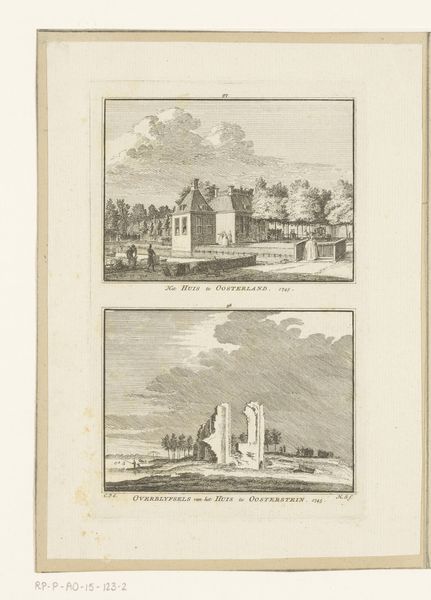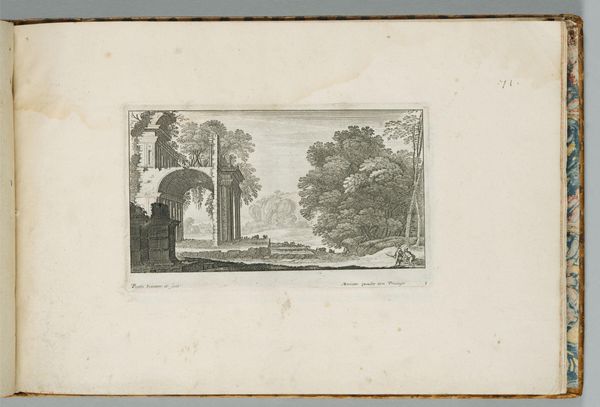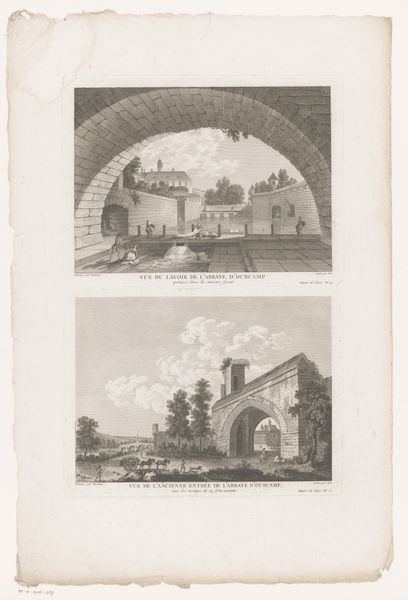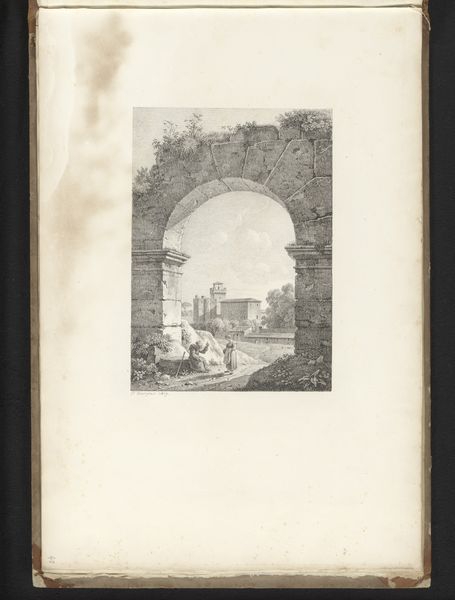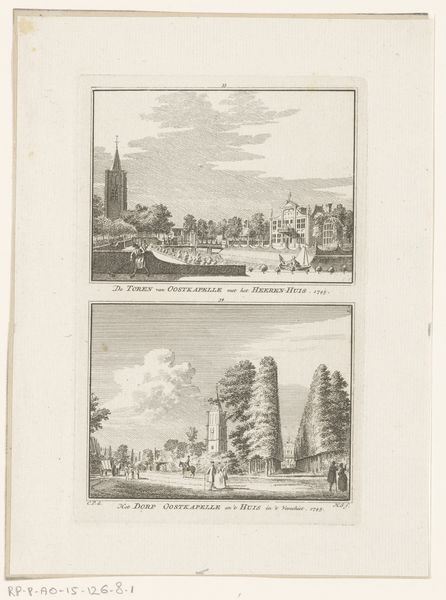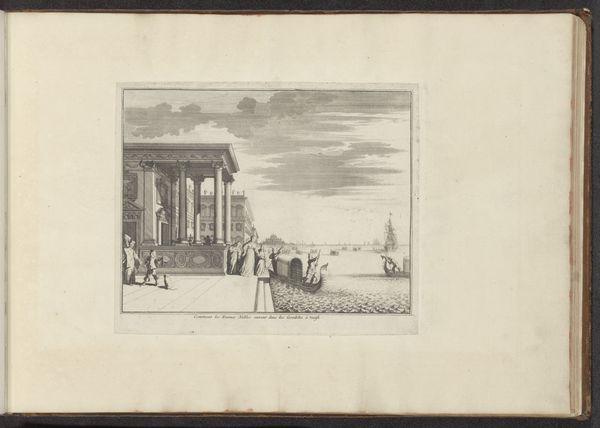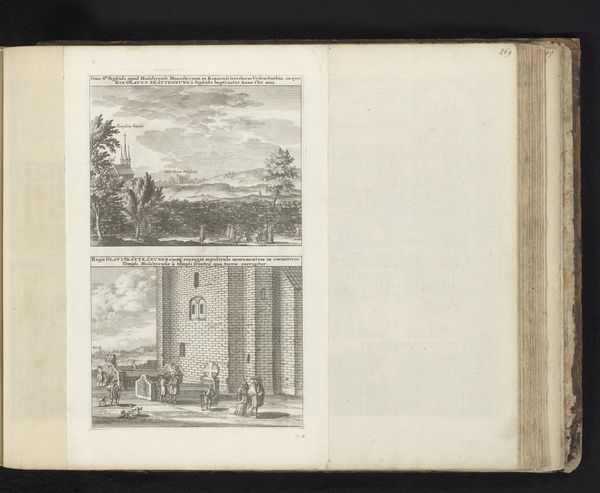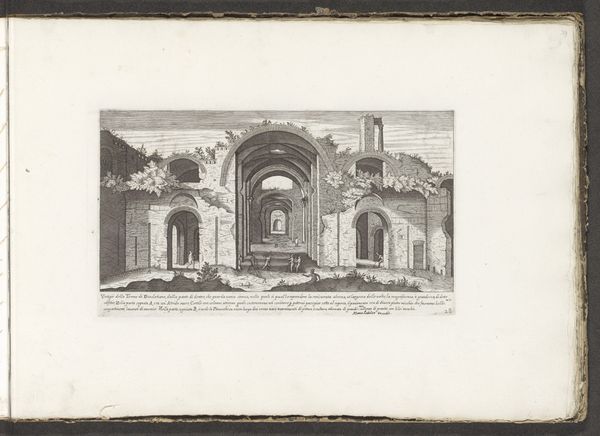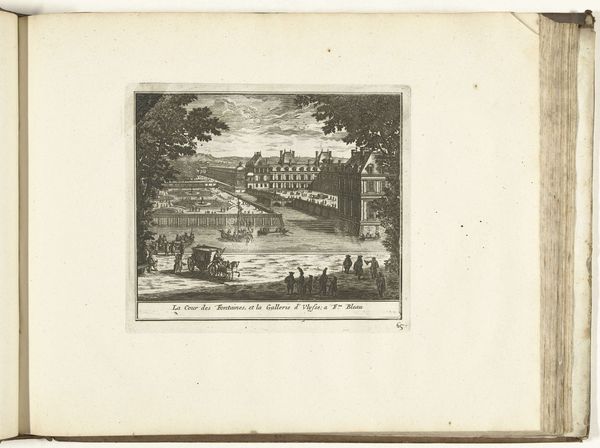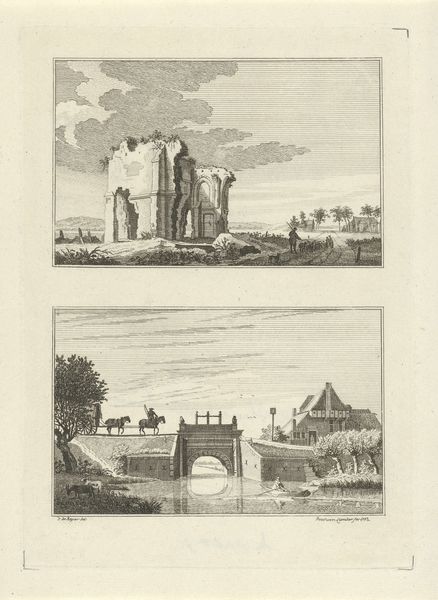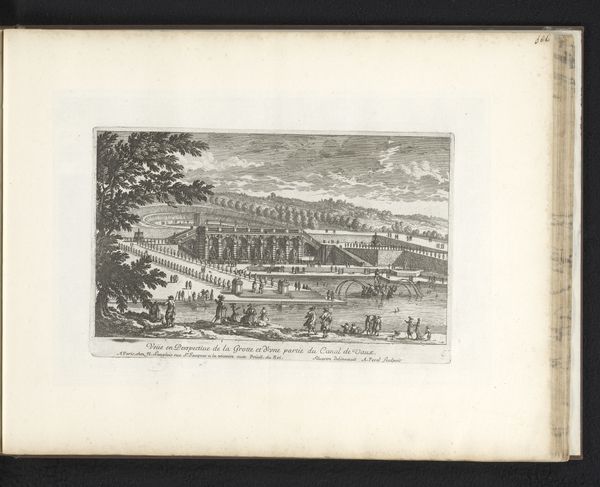
Poort in de tuin van Kasteel Heemstede / Prieel met zicht op de grote vijver, de poort en Kasteel Heemstede 1706 - 1719
0:00
0:00
isaacdemoucheron
Rijksmuseum
print, engraving, architecture
#
baroque
# print
#
landscape
#
engraving
#
architecture
Dimensions: height 533 mm, width 382 mm, height 170 mm, width 160 mm
Copyright: Rijks Museum: Open Domain
Curator: Here we have a fascinating print by Isaac de Moucheron, dating from about 1706 to 1719. It's titled "Gate in the garden of Kasteel Heemstede/ Gazebo with a view of the large pond, the gate and Kasteel Heemstede." Editor: Immediately I feel this air of poised elegance. Everything seems so measured, so consciously arranged. Is it supposed to be this perfectly balanced, architecturally tight vision? Curator: Absolutely. De Moucheron was a master of Baroque landscape design. He focuses here on structure and clarity through engravings of garden architecture. Note how his calculated lines direct your gaze into space with controlled linear perspective. Editor: You're right. My eye moves from the figures in the foreground of the lower scene, past those magnificent statuesque pillars acting as a proscenium arch and directly into that far pavilion. Even the arrangement of figures and foliage serves the architectonic logic. Tell me about this use of repetition… Curator: Yes. Moucheron arranges paired views, employing parallelism between a larger and smaller composition, drawing us between interior views out toward staged encounters on a distant ground. It is all meticulously constructed—nothing feels accidental. It presents an idealized vision of nature and the landscape, entirely shaped by man. Editor: In some way the precision here unnerves me; I appreciate artifice when the hand of the artist reveals itself to some extent. Instead, De Moucheron delivers an almost surgically neat vision of nature here. But I still admire its execution. This image becomes then about the formal rigor imposed. Curator: Well, I'm so often seduced by the allure of imagined worlds and constructed gardens, the Baroque urge for total design. I relish de Moucheron's meticulous approach as he transforms the gardens into stages where artifice mimics—and arguably improves upon—nature. It is art as total control, an aspiration, perhaps a statement of will and intention as well as refined art-making of the era. Editor: Ultimately, experiencing this has sparked thoughts about the artifice we accept, how intentional imposition upon nature and human structure intertwines and produces surprisingly evocative results. Curator: It’s left me contemplating, not for the first time, the beautiful tension of that eternal dance!
Comments
No comments
Be the first to comment and join the conversation on the ultimate creative platform.

